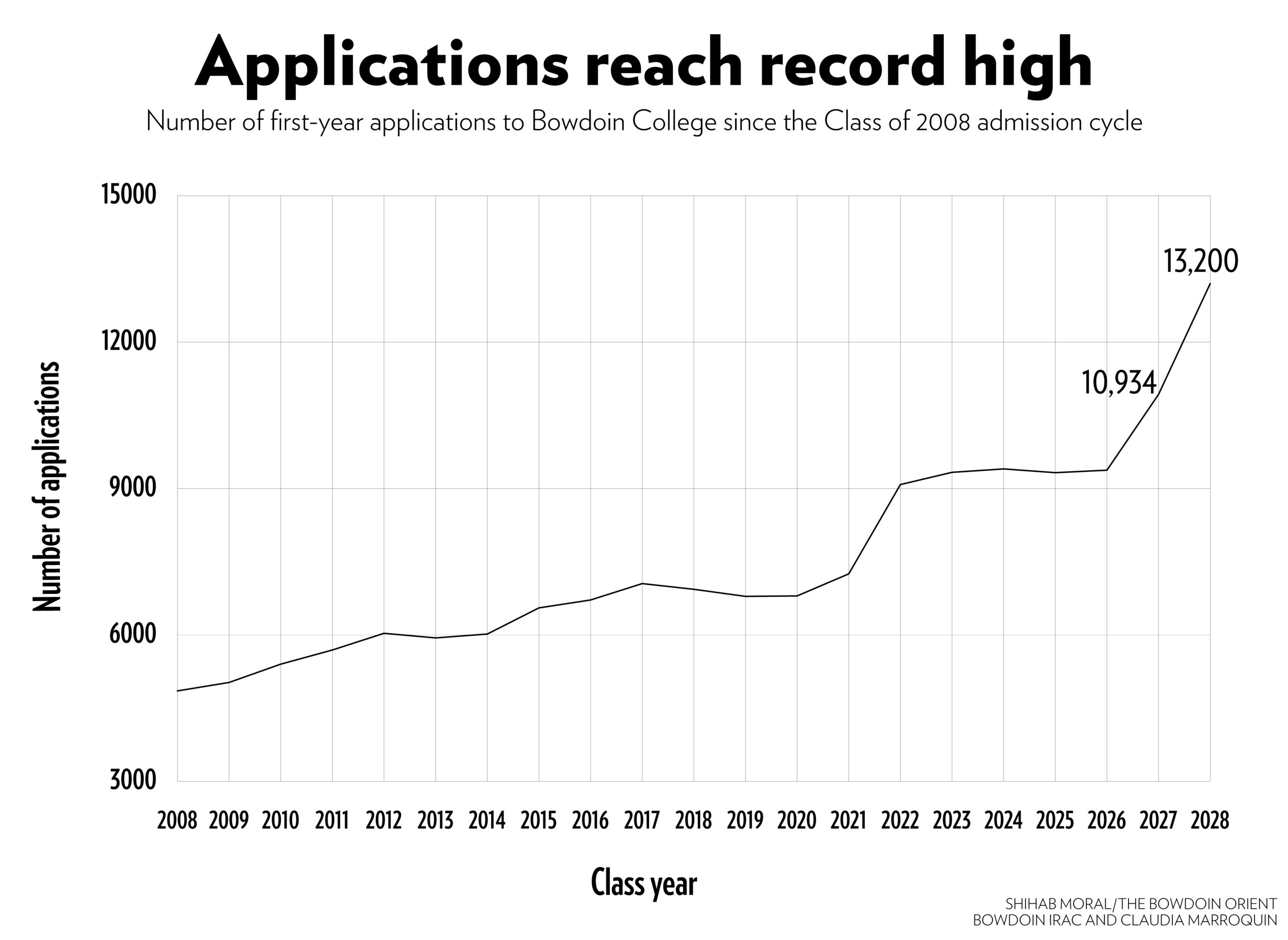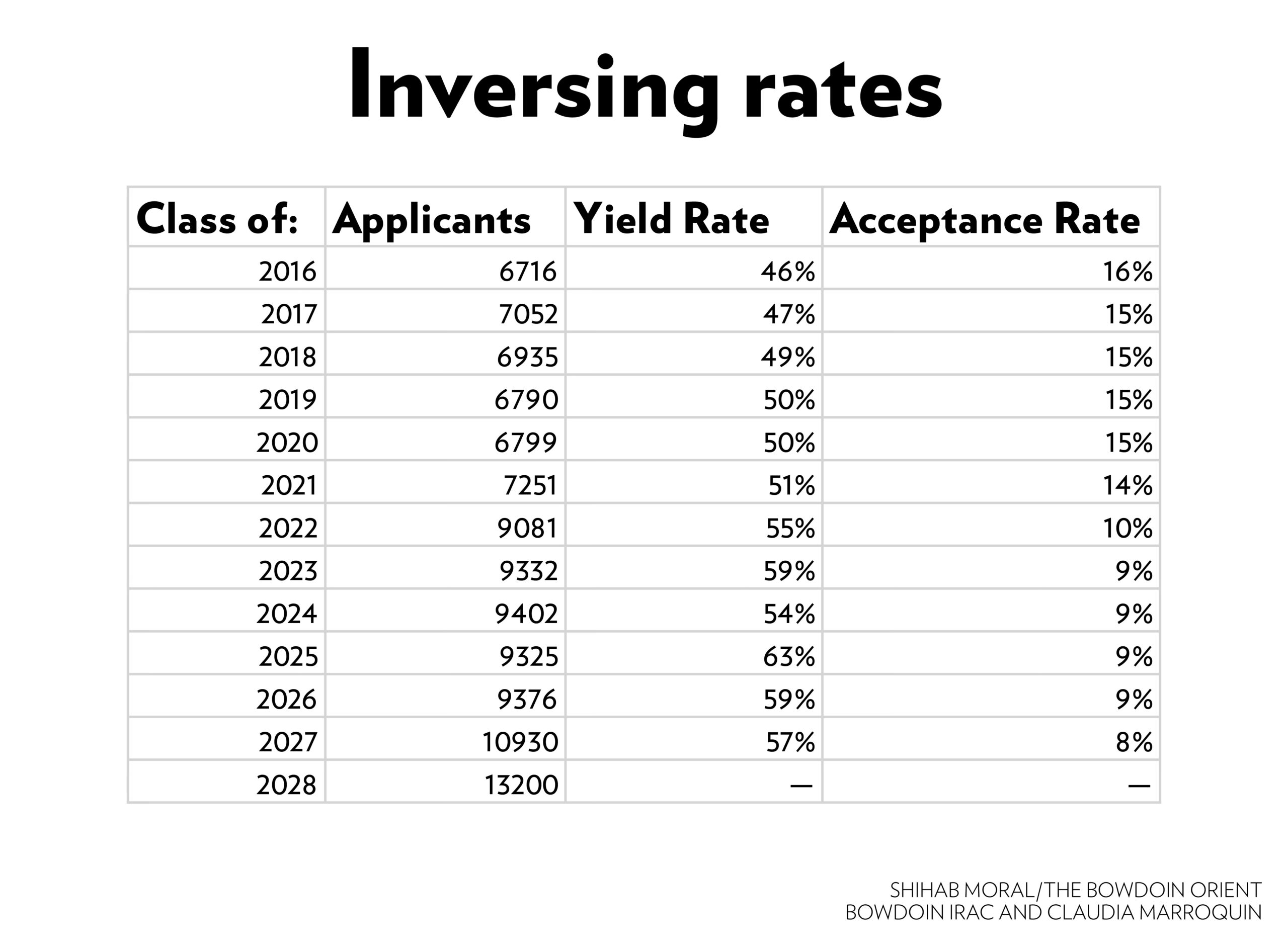Application numbers continue to climb for the Class of 2028
February 9, 2024
 Shihab Moral
Shihab MoralThe College received just over 13,200 applications for the Class of 2028—the highest application numbers in the College’s history and a continuation of the rise in applications over the past two years.
Applications increased by about 20 percent, surpassing the 10,934 applications received last year for the Class of 2027. The Office of Admissions admitted about 270 of the 2,005 students who applied in both the Early Decision I and II rounds collectively, resulting in an acceptance rate of around 13.5 percent across both early rounds. Nineteen students were also admitted through the Questbridge National College Match.
Senior Vice President and Dean of Admissions and Student Aid Claudia Marroquin ’06 attributes this rise in applications to the College’s strong financial aid program and need-blind approach to both domestic and international students. Marroquin in particular noted the important role outreach about these programs has played.
“We work hard to ensure students understand that a Bowdoin education can be affordable while speaking candidly about Bowdoin’s community,” Marroquin wrote in an email to the Orient.
To better manage this year’s volume of applications, Admissions switched to a team-based approach in which two admissions officers read and discuss an application together. Previously, only one admissions officer read an application in its initial review.
Marroquin commended her colleagues for adapting to the multitude of changes this application cycle.
A delay in financial information from the Free Application for Federal Student Aid (FAFSA) and the Department of Education means that colleges across the U.S. will not receive the data needed to calculate financial aid packages until early March. This condensed timeline means that colleges, including Bowdoin, may have to delay giving out financial aid awards, impacting the decision-making of students who applied for financial aid.
“Our team has done a truly remarkable job keeping up with the volume,” Marroquin wrote. “From our operations team handling the influx of materials being emailed to us, to financial aid handling lots of questions regarding the FAFSA delays, to all the application reading, it has been a heroic effort.”
An additional challenge both the admissions team and applicants faced were the changes brought on by the Supreme Court ruling on affirmative action. With demographic information no longer visible on college applications, students had the option to complete the Navigating Difference supplemental essay for the second year, which allows applicants to speak more about how their identity has affected them.
Marroquin wrote that while she observed more applicants choosing to complete the optional supplement, it will be difficult to assess the effect of the Supreme Court ruling on the racial diversity of applicants until after the waitlist is closed in the summer.
In addition to the new supplemental essay, Marroquin shared that the admissions team underwent extensive training to prepare for navigating the changes in applications following the ruling as well as the new team-based approach to evaluating applicants.
Marroquin also raised factors impacting Admissions’ model for yield rate. She noted that factors like pandemic-related changes in student behavior, the economy, changes in admissions at other colleges and universities and issues with the FAFSA form have contributed additional difficulties in approximating the yield rate.
“This year is truly one that is in flux,” Marroquin wrote.
Regular decision results for the Class of 2028 will be available in mid-March, bringing the application process to a close for many eager students.



Comments
Before submitting a comment, please review our comment policy. Some key points from the policy: